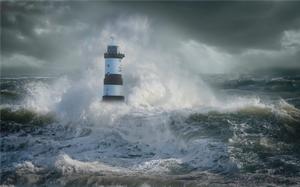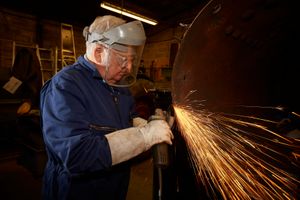Part 2- Turn of the Century to World War II
The Dress
c. 1900-1910
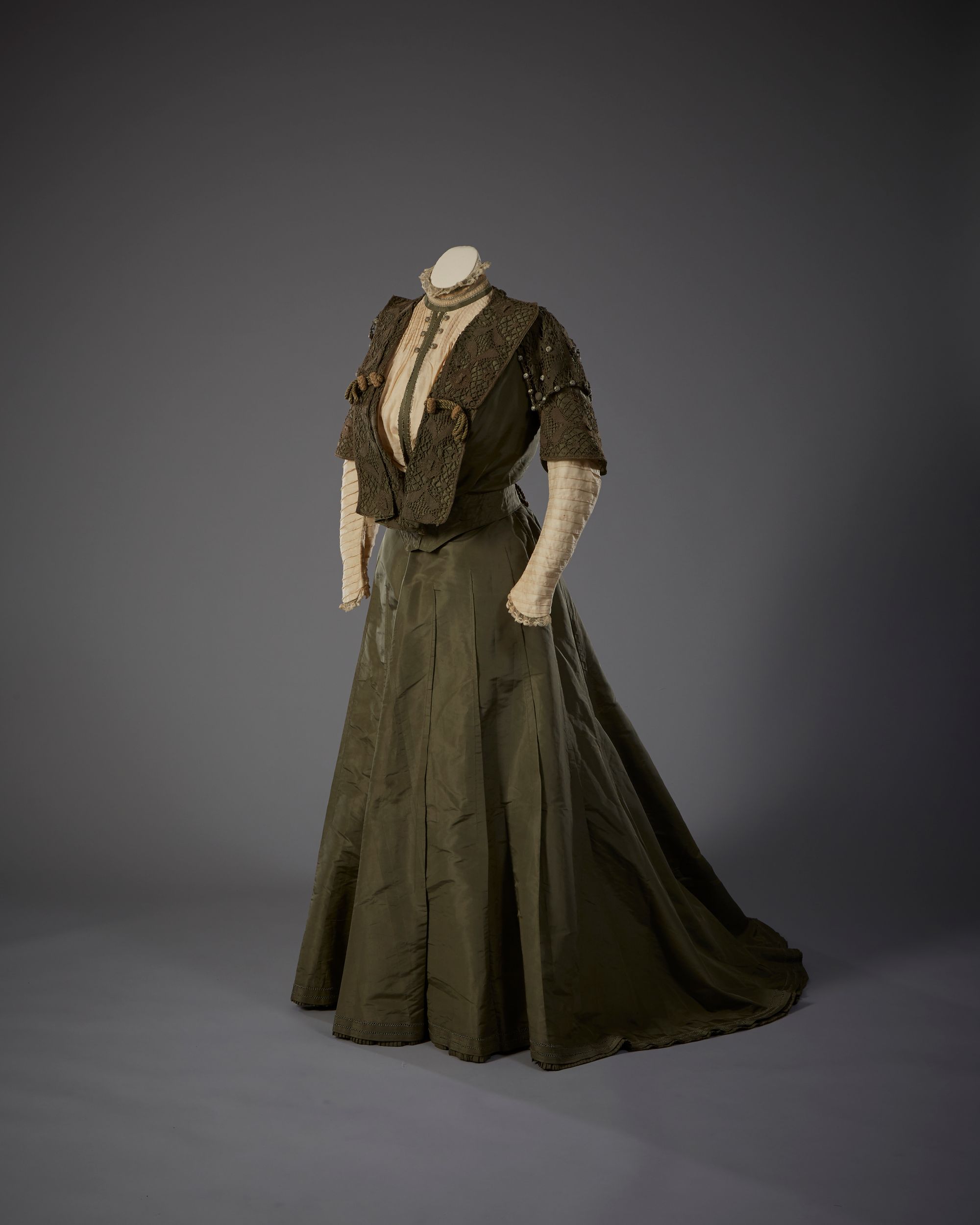
As the Victorian era drew to its close, skirts that were fuller at the back and formed trains became once again popular for both day and evening. For daytime, ladies wore very high necks and with a fullness over the boned bodice that would often drop to below the waist. These pigeon breast bodices often featured wide collars that dropped off the shoulders. Decoration was applied using large and small tucks, hem ruffles, buttons and lace inserts.
Evening dresses were often more revealing, usually without sleeves, exposing the neck and shoulders. The great Haute Couturiers of this time were Worth, Doucet, Lanvin, Paquinand Fortuny.
This garment from the first decade of the new century has signs of remodelling from an earlier fashion as the spare pieces indicate a longer bodice and a skirt with a bustle. This double sleeve effect was very popular at the time. The cream modesty front piece is attached only around the neck. The machine lace panels that cover the front, back, shoulders and decorate the upper sleeves is made of cotton and is presented as if attached in place by cord tassels.
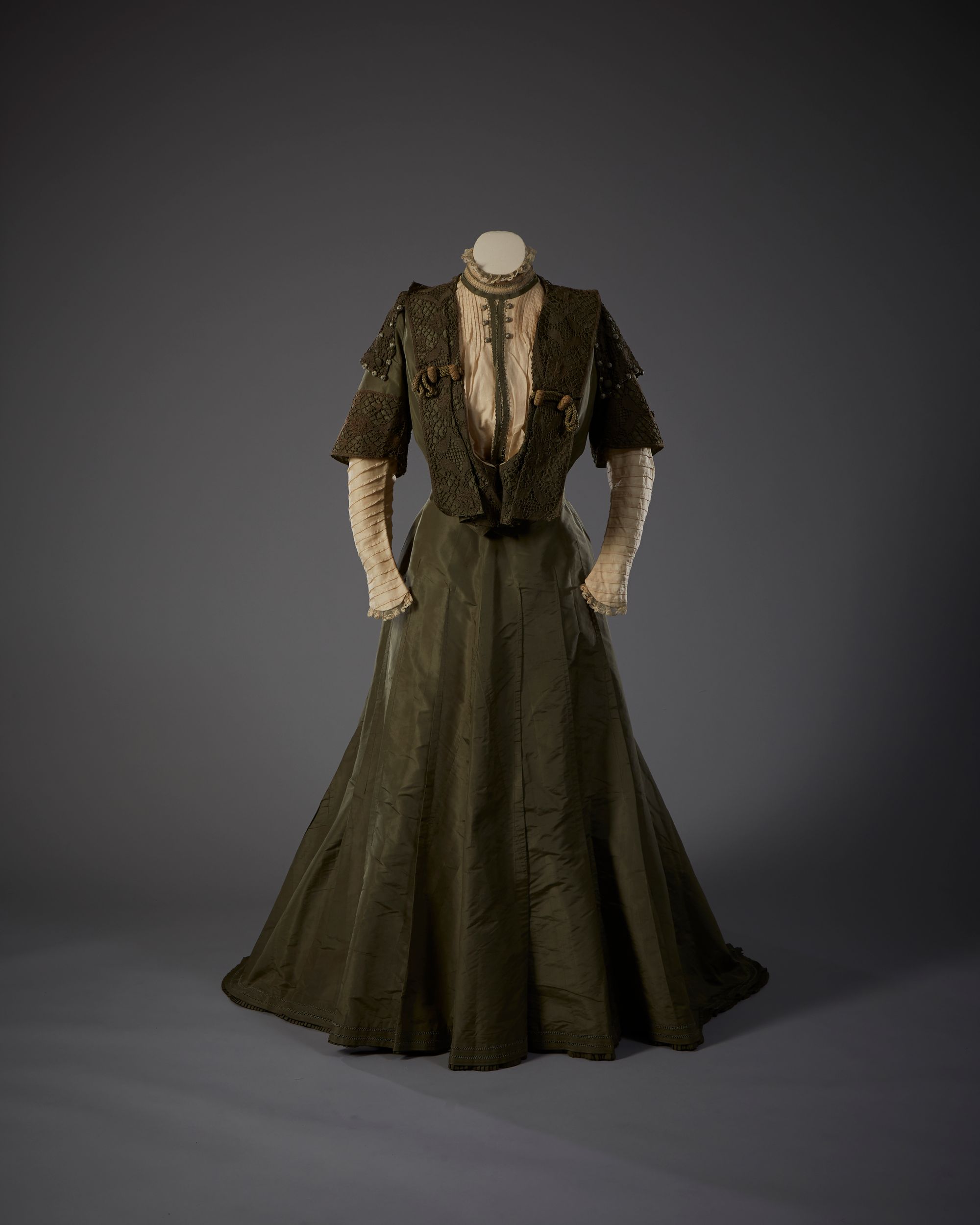
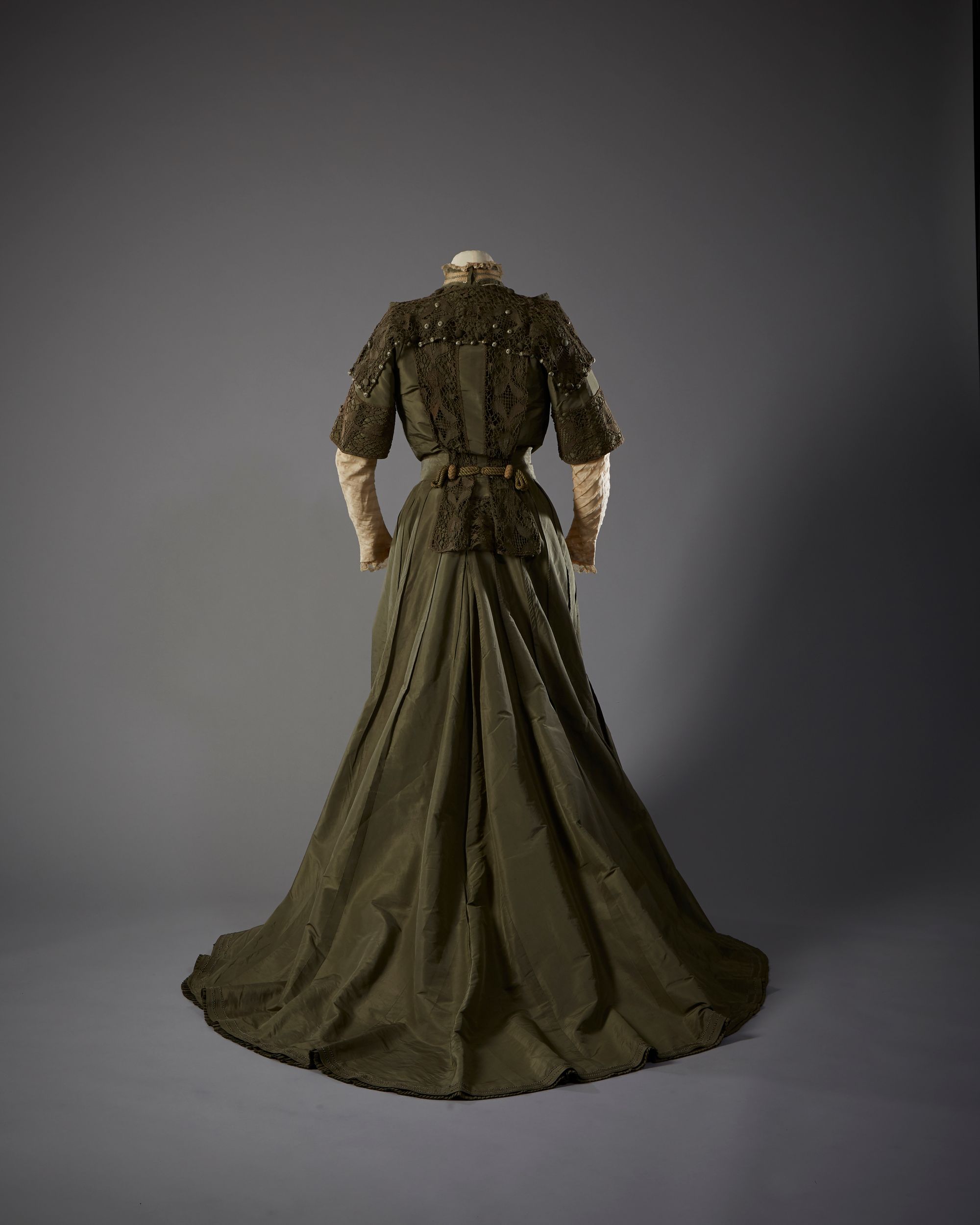
The Dress
c. 1925-1926
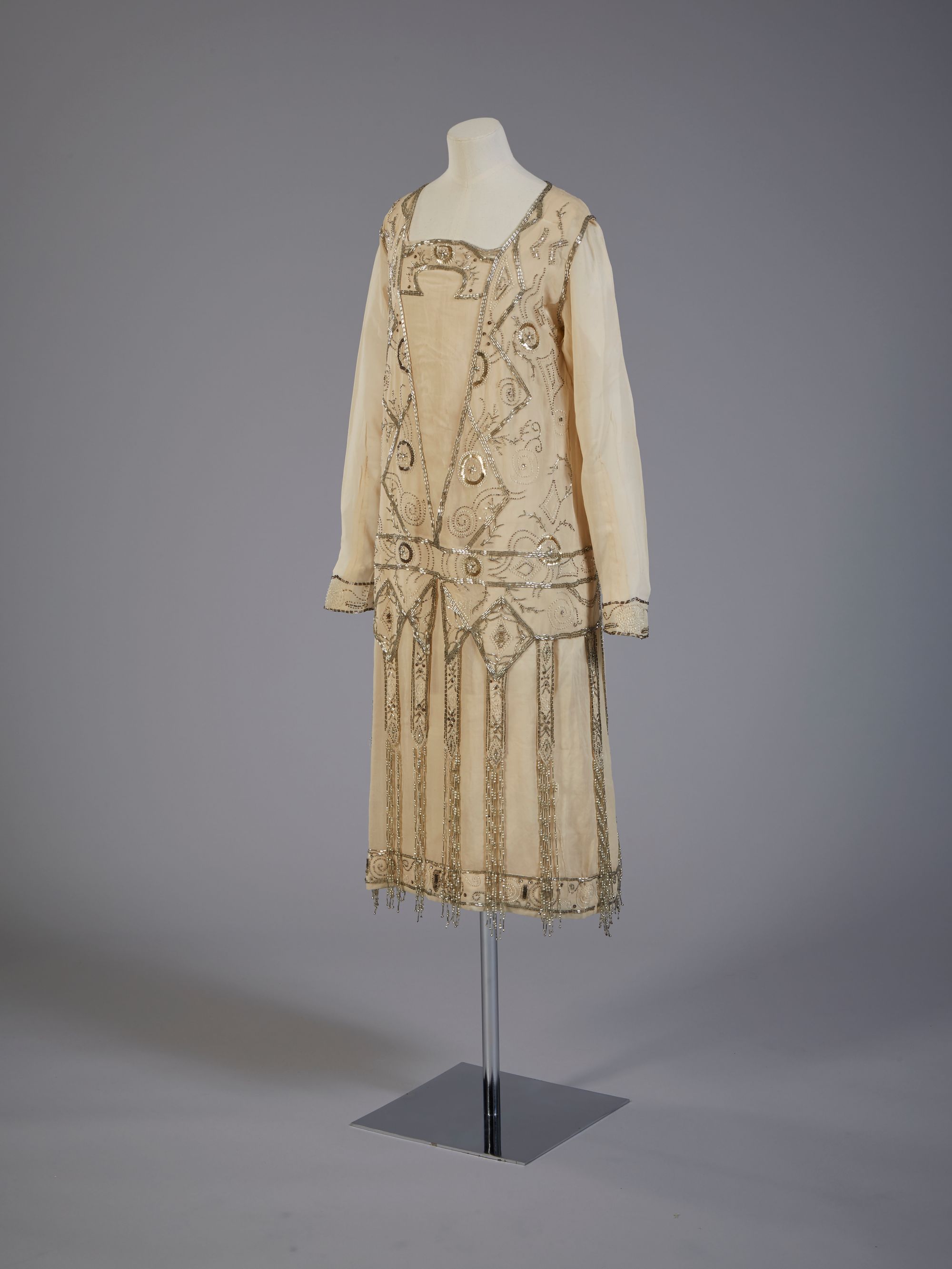
With the emancipation of women that came with the First World War, more active lives were led and clothes became more practical, loose–fitting and even androgynous. The new silhouette was flat chested, slim and athletic with hemlines reaching above the knee by 1926. The French couturier of the day, Poiret,influenced fashion with his orient-inspired designs, but medieval influences were very much in vogue for bridal wear. Crepe de chine, silk taffeta, tulle, metallic lame and lace in off white, pale gold and shell pink were popular choices.
The filming of the two royal weddings of the 1920’s: that of the Princess Royal to Viscount Lascelles and of the Duke of York to Lady Elizabeth Bowes-Lyon, set the new broadcasting medium as the point of reference for new fashion trends and started the trend of the film icon.
This 1926 crepe de chine and chiffon dress in a straight tunic shape follows the trends of the period for beading and abstract motifs. The beaded decoration is carried out in seven different types of silver, crystal and white beads and sequins.
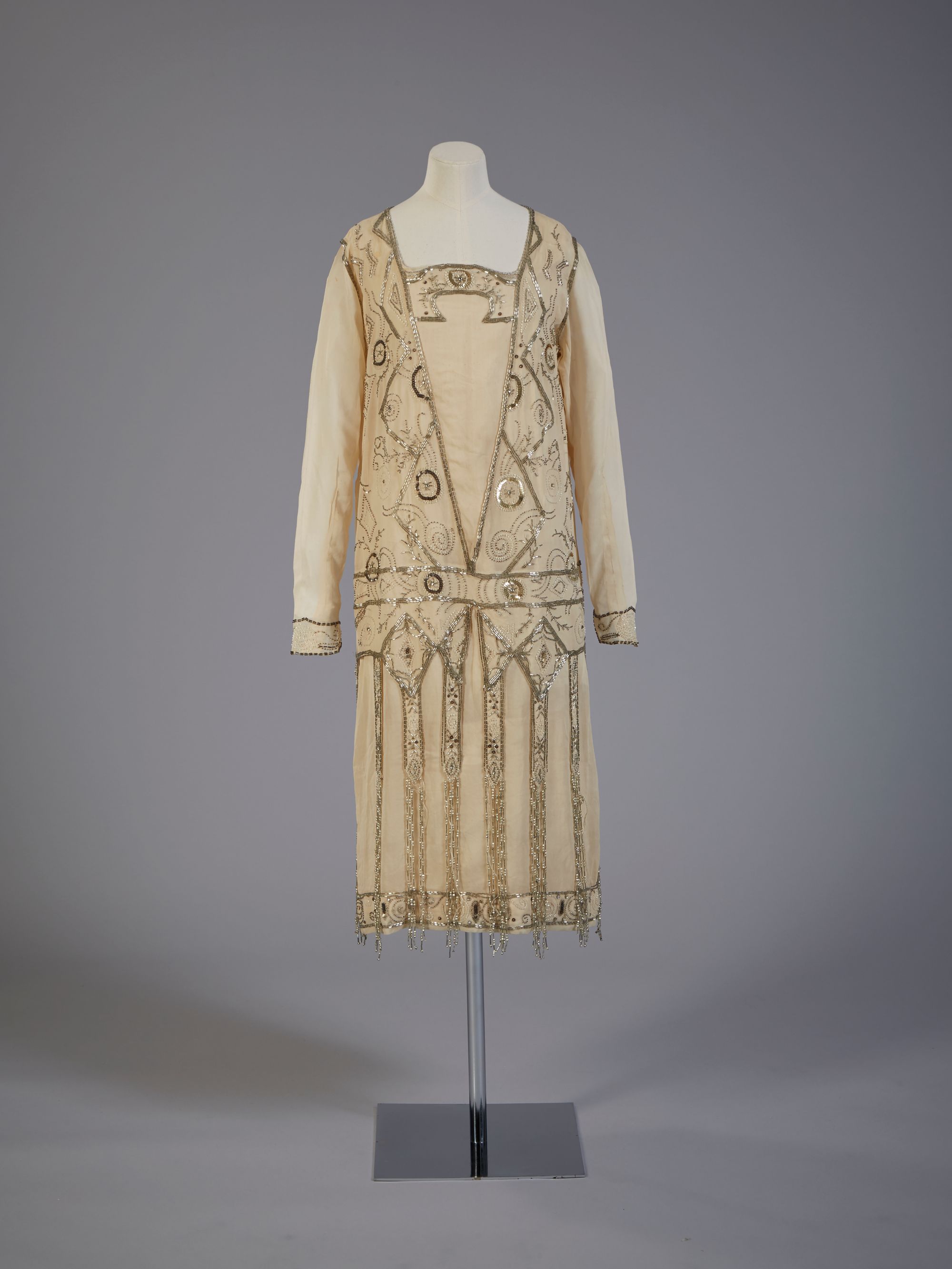
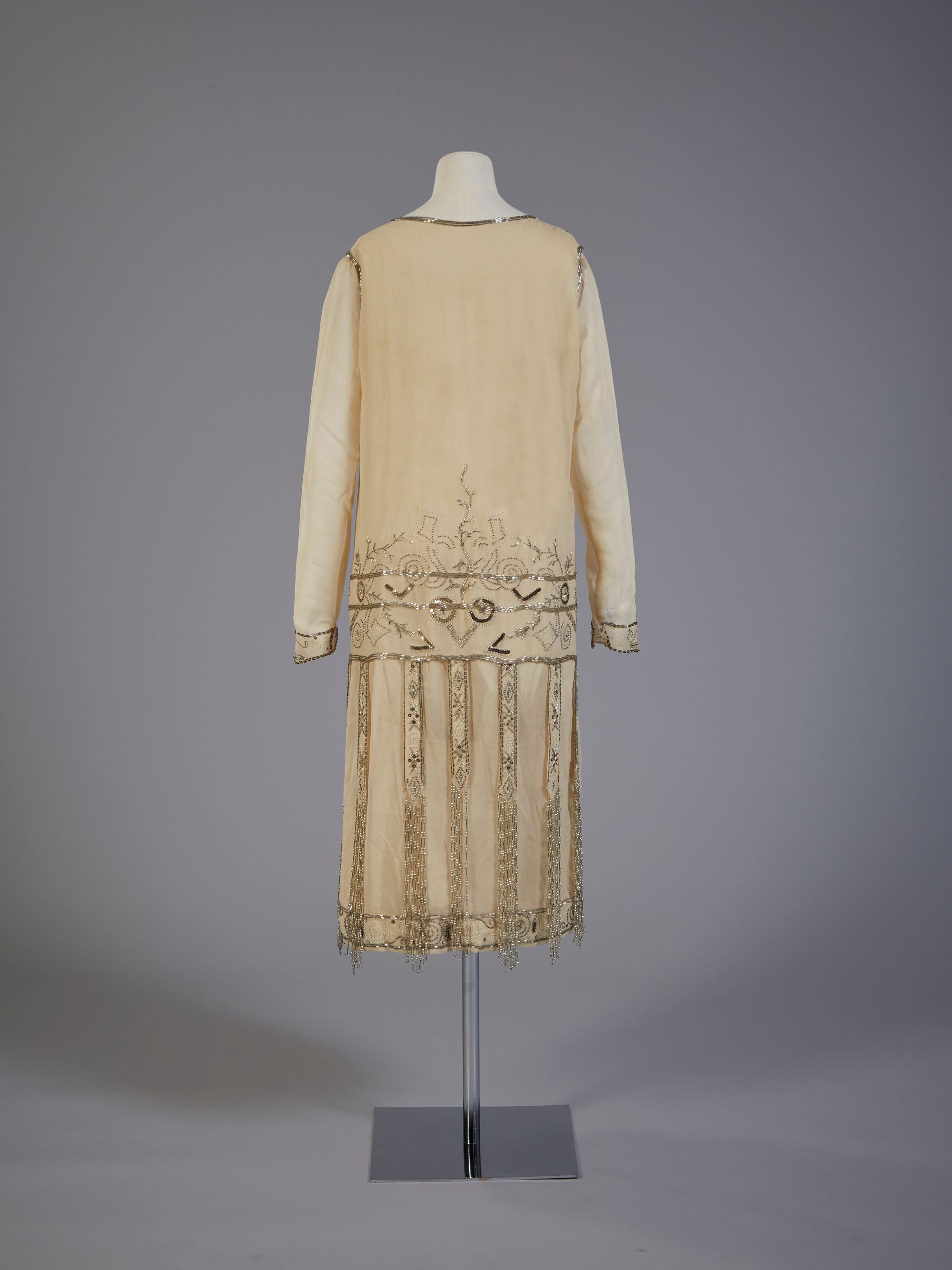
The Dress
c. 1939
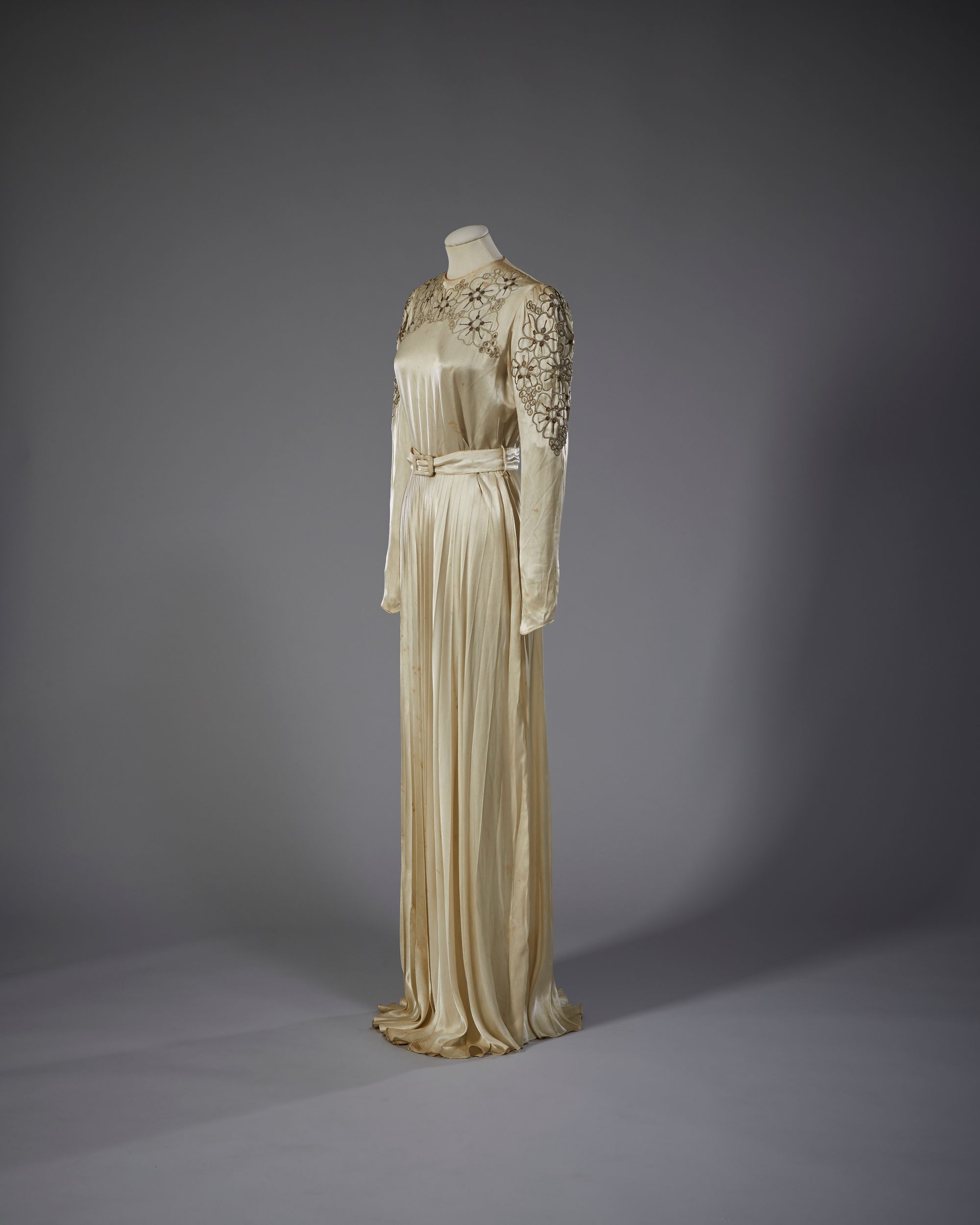
Mid-1930’s fashion and bridal gowns were influenced by glamorous evening dresses worn by much loved Hollywood stars. The wedding of Princess Marina of Greece, a fashion icon of the time, to the Duke of Kent set the standards for simplicity and elegance and her wedding dress was widely copied.
New materials like rayon and fluid silk satins combined with the new technique of cutting the fabric on the bias created a fluid, form hugging silhouette that accentuated a slim waist and curvaceous hips. The shoulders were square and exaggerated by the use of shoulder pads.
This 1939 rayon satin dress with the cutwork flowers at the top of the sleeves has a sunray pleated skirt that elongates the figure and creates an elegant column-like effect. With the wide shoulder pads and the fuller sleeve becoming more fitted and finishing to a point over the hand it would have been the epitome of 1930’s style.
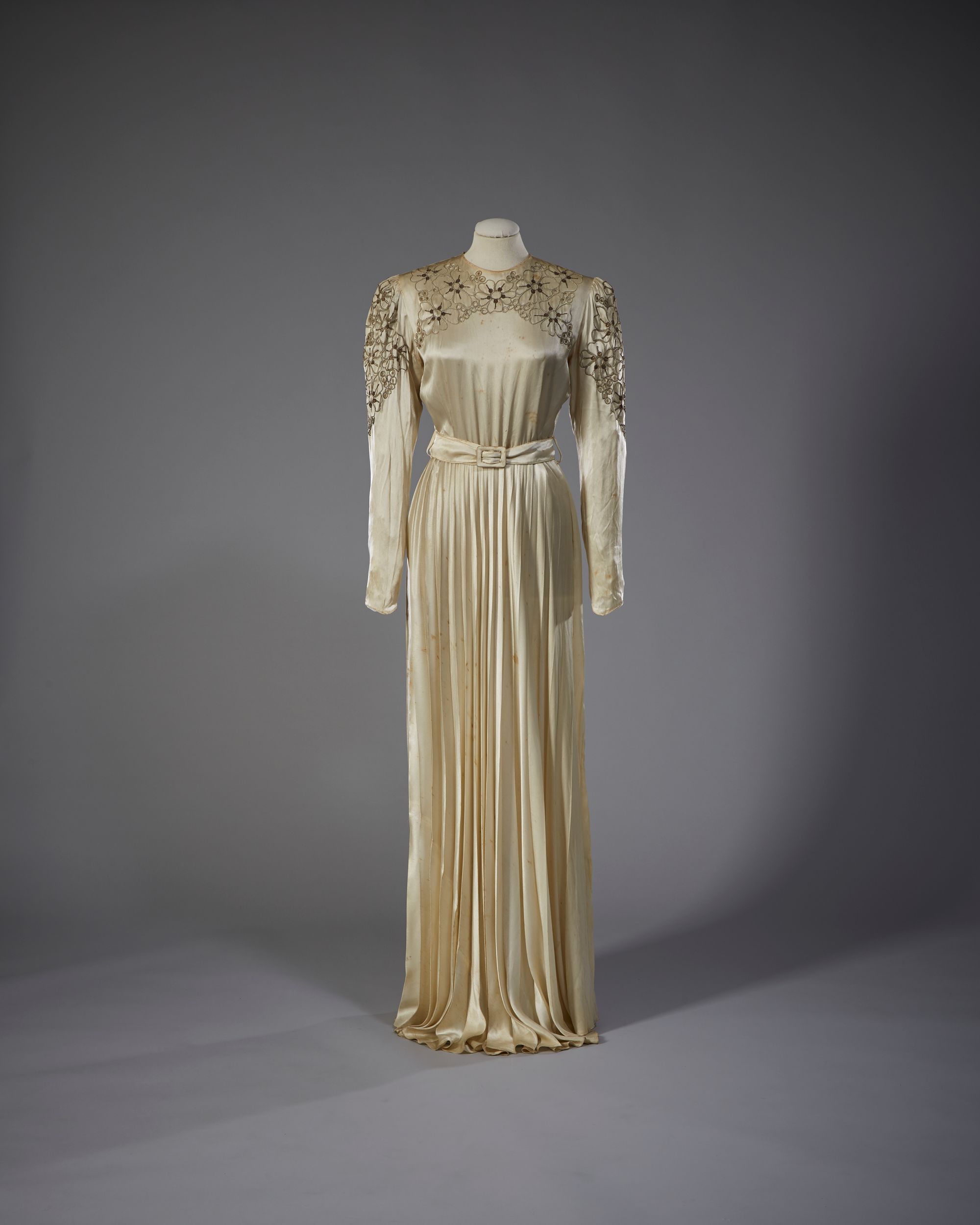
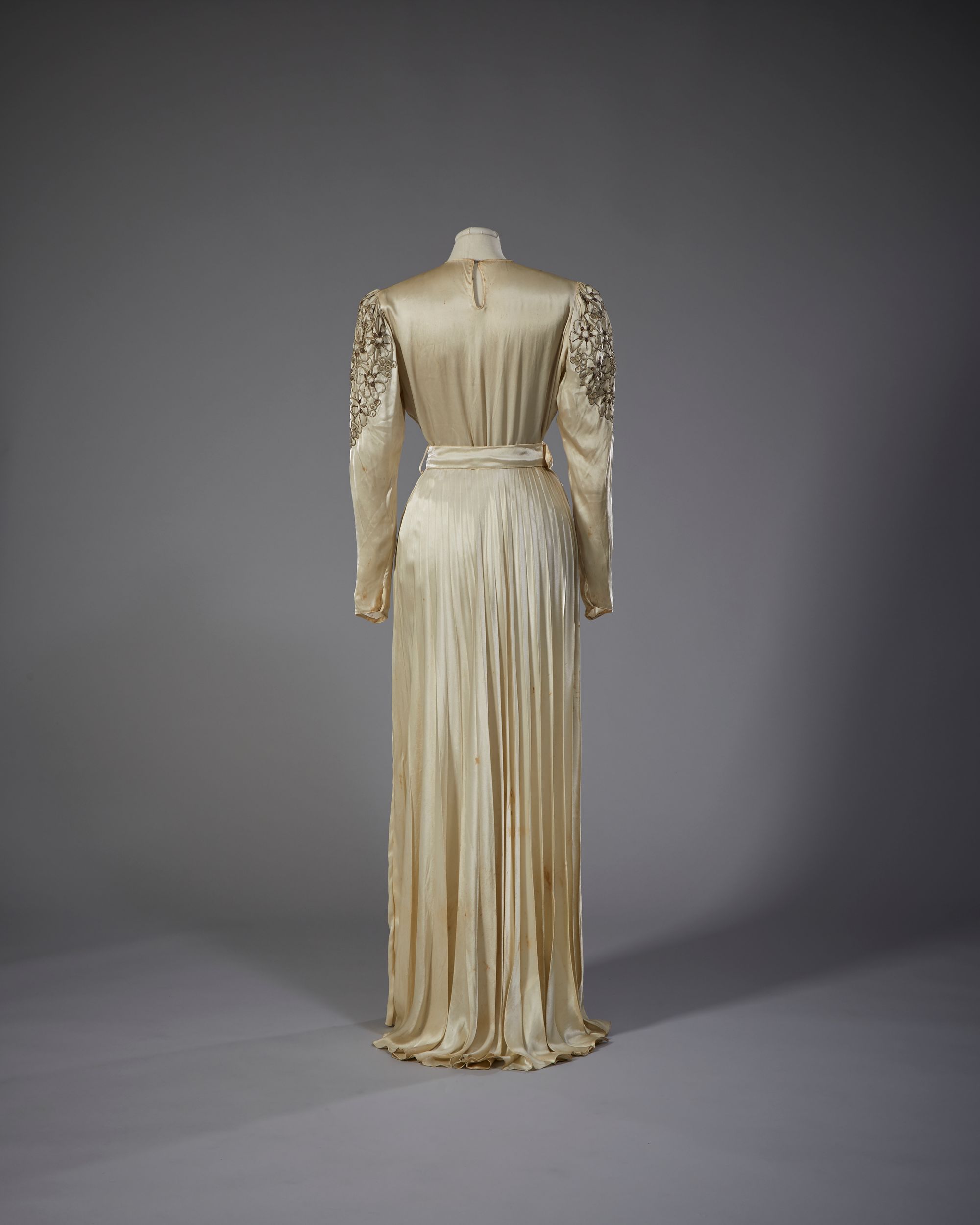
The Dress
c. 1942-1943
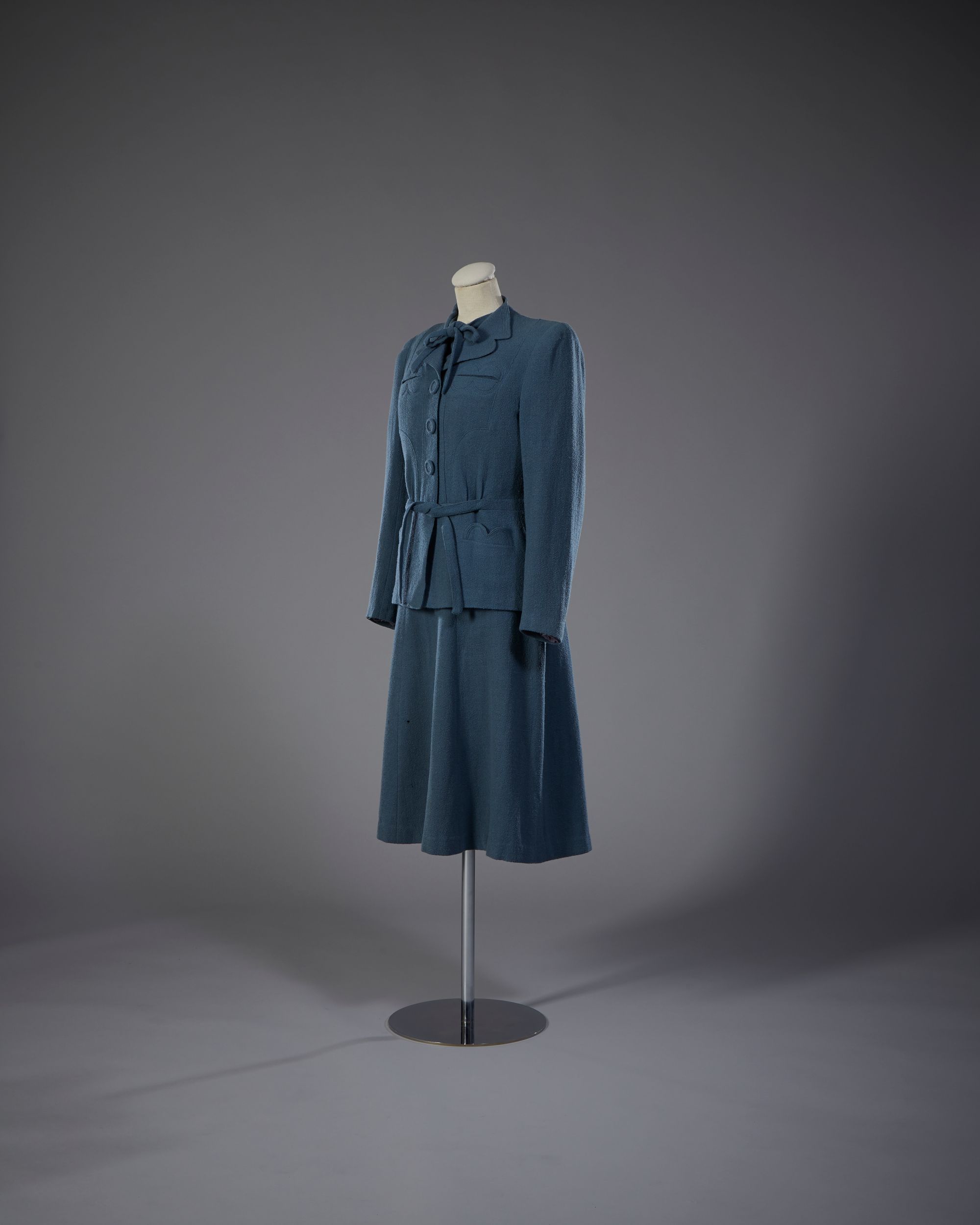
During WWII shortages of fabric prompted the government to introduce rationing, allowing 66 coupons per person annually, intended to keep prices down and ensure fair distribution of fabric to all. A utility scheme was introduced dictating restrictions, including the number of pleats and the number of buttons allowed.
Wartime weddings were often arranged on the spur of the moment with little time to plan. Many women opted to get married in their service uniform or chose a smart suit or dress. Suits were expertly tailored making best use of every inch of fabric.
This 1942 two-piece suite in Wedgwood blue, a very popular colour in wartime Britain, is a perfect example of almost utilitarian wear. The dress has short puffed sleeves, a front panel across the waist that creates a gathered detail, with a bow from the same fabric on the front of the round neckline. The jacket features the allocated four fabric covered buttons and is embellished with a sweetheart design over the false pockets.
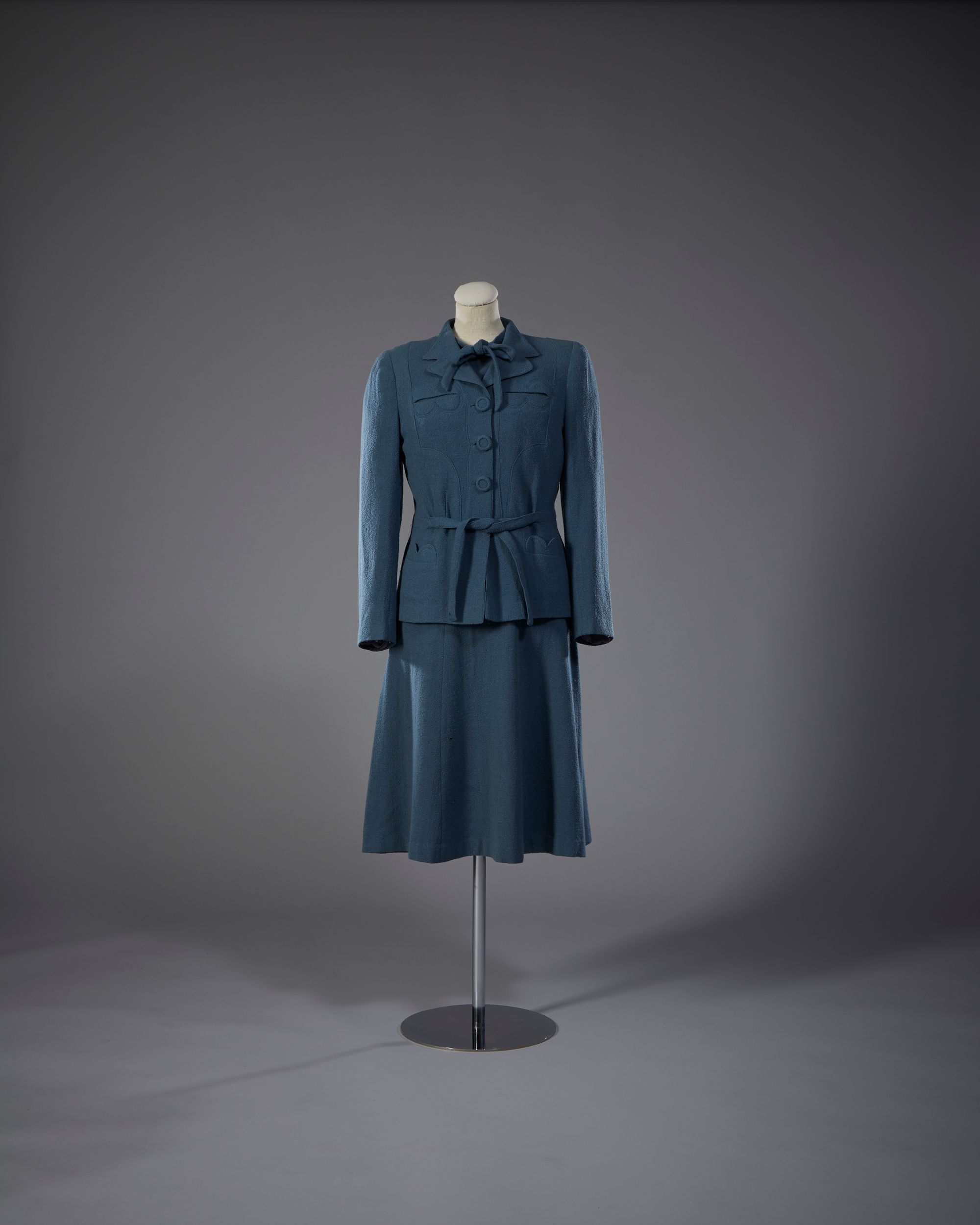
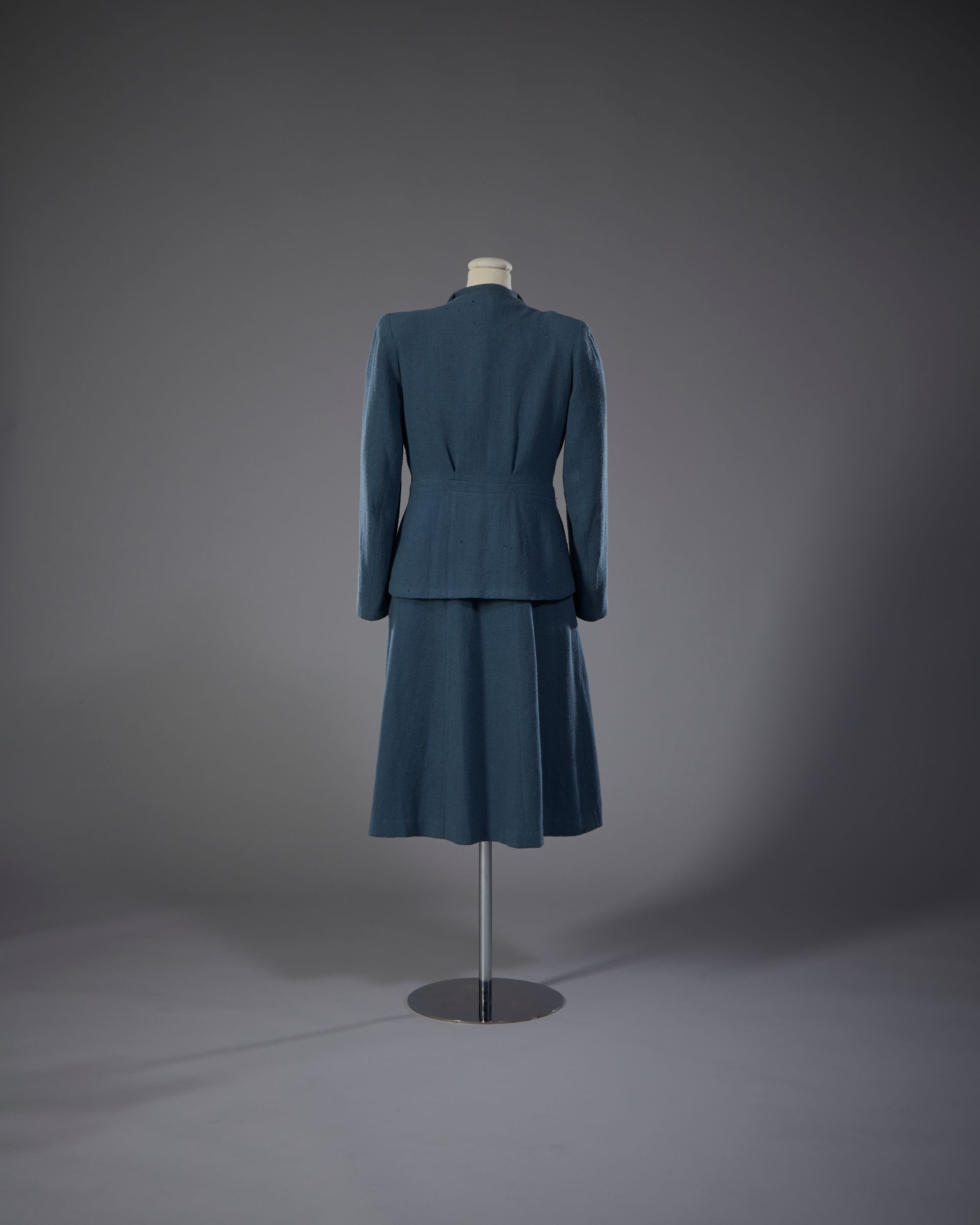
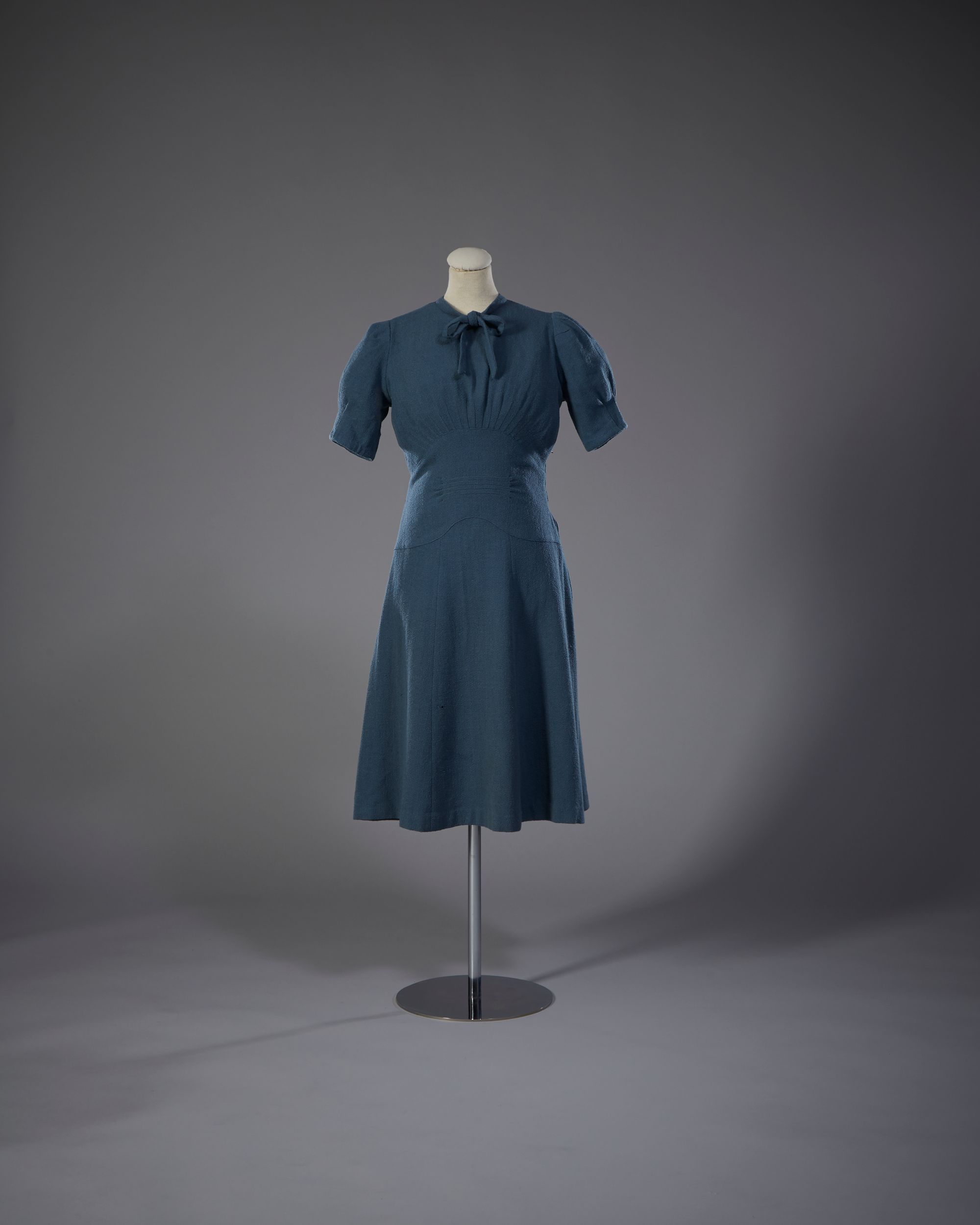
Part 3 will be published on 29 May.
If you have enjoyed Culture on Call and you are able to make a donation, any support you can give will help us keep people connected.


